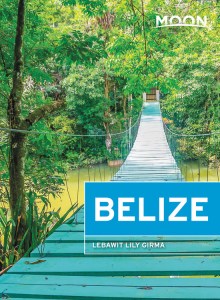Transportation in Belize: How Locals Travel
There are several ways of traveling around Belize, whether you’re planning a visit or looking to move there. Here are some of the options:
Driving in Belize
There are no four-lane highways in Belize. The highways are two-lane roads with no pavement as such, few lights, not many directional signs. Zebra crossings are a rare sight and so are traffic lights (and parking meters), but the road network is pretty basic and it’s hard to get lost. There aren’t many gas stations in rural areas, so plan ahead and carry some extra fuel. Also make sure that you have a spare tire and the tools to change it. There are quite a few buses on the road, as well as agricultural vehicles, motorbikes, and Mennonite horses and carts. Many people bicycle. You will also notice quite a few pedestrians along the roads, occasionally on horseback, and, during the school year, kids going to school neatly turned out in their uniforms. You will encounter quite a few speed bumps, potholes in places, bridges, and police checkpoints, usually checking to make sure your insurance and road license are up-to-date and in order. Be careful when driving in Belize: The driving tests are not very rigorous so the quality of driving is dodgy to say the least, and there is quite a bit of drinking and driving. Despite the threat of a fine of BZ$50, few people wear seat belts. Car accidents are one of the main causes of death in Belize. Pay attention and drive carefully.

There are four main highways in inland Belize. Two of the four start in Belize City and you will see little road markers with a number on them. This indicates how many miles you are from Belize City and is also used as a directional tool; for example, people will advertise their shop or house as being at or near Mile 28 on the Western Highway. The main highways are the Northern Highway, from Belize City to Corozal in the north of the country; the Western Highway, from Belize City to Benque Viejo in Cayo District on the Guatemalan border to the west; the Hummingbird Highway, from near Belmopan to Dangriga; and the Southern Highway, from close to Dangriga down to Punta Gorda in the south of Belize. On the whole, the highways are quite good. Unpaved roads vary, some are graded regularly—particularly in the dry season—and are fine, and others are so bad they become impassable during the rains. Generally, it’s best to have a four-wheel drive vehicle. There is a lot of wear and tear on vehicles here and maintenance becomes a high and regular cost. You can rent cars, but it’s expensive at around BZ$70–125 a day. If you haven’t brought a car with you, buy one locally if you plan to stay. Avis, Budget, Hertz, and Thrifty, to name a few, have franchises in Belize, along with local companies like Crystal, which also sells used cars. While the buses plow most of the main roads and highways, you will need independent transport to get around to see the sights, to hunt for property, and to visit people, as many live off the beaten track. In case you end up wondering about the varied colors of license plates in Belize, government plates are blue and diplomatic corps are red on white.
Newsletter Signup
By clicking ‘Sign Up,’ I acknowledge that I have read and agree to Hachette Book Group’s Privacy Policy and Terms of Use
Public Transportation in Belize
Public transportation is quite good, fairly reliable, frequent, and cheap across the country. Most buses are old school buses from America, many of which have been painted in bright colors. A bus ticket to San Ignacio from Belize City costs BZ$7, and from Belmopan to San Ignacio costs BZ$3. There are a few express buses, which travel direct, but most buses stop randomly along the way, which means the trip can take a bit of time. If you’re not in a rush it’s a great way to see the country and experience the people. Music is always played on the buses and varies from Spanish ballads, to reggae, mainstream pop, and punta rock. Most people chat away (mainly in Spanish) or sing along. It is a far cry from the serious, unsmiling faces hiding behind their newspapers on the daily commute in the Western world. On the whole, people are friendly and helpful. The bus conductor always helps people off the bus with their shopping, assists the elderly, and guides little children down the steps or hands them to their parents. If it’s a long-distance bus, say from San Ignacio to Belize City, it will stop briefly at the Belmopan bus terminal, where food, drink, and newspaper vendors board the bus to sell their goods. Passengers can also get off the bus. Most of the bus terminals have public restrooms. They look a bit battered from outside but are generally quite clean. A woman stands at the entrance and for 25 cents gives you some toilet paper before you enter. There are usually a few kiosks selling a variety of drinks and food in the bus terminals.
Taxis in Belize often have a sticker or a sign and always have green number plates. In some cases you will find set prices, in others you will need to bargain politely. There are no meters in the taxis and sharing rides is common. A taxi from the airport into Belize City costs around BZ$50. Within town there is a usually fixed rate of BZ$5–10.

Boating in Belize
For those who live along the coast or on the Cayes transportation is entirely different. Many people have their own boats. Parts of the Cayes are only accessible by boat, like getting from the far north of Ambergris Caye to San Pedro. There are frequent water taxis from Belize City to the Cayes. They go back and forth regularly and cost BZ$10–15 one-way depending if you’re going to San Pedro or Caye Caulker. The boats are quite big, partially covered, fast vessels with outboard engines. From Belize City they take about 30 minutes to Caye Caulker and 75 minutes to San Pedro. You can catch them at the Marine Terminal close to the Swing Bridge on North Front Street. There are a few shops and a couple of cafés at the terminal. Taxis wait outside. The water taxis also go between San Pedro, Caye Caulker, and Chetumal, as well as between Corozal and San Pedro. There is another water taxi, which travels around Ambergris Caye, making stops at popular places on the island. There is also a water taxi called Hokey Pokey between the village of Independence/ Mango Creek and Placencia Village.
Bicycles and Golf Carts in Belize
For those living on the Cayes or on the coast in places like Placencia Village and Hopkins, golf carts are the most common mode of transportation, along with bicycles and walking. You will see few cars. Golf carts can be rented or bought and are the fastest, easiest mode of transportation in these areas.
Excerpted from the Second Edition of Moon Living Abroad in Belize.
Newsletter Signup
By clicking ‘Sign Up,’ I acknowledge that I have read and agree to Hachette Book Group’s Privacy Policy and Terms of Use
Pin it for Later


